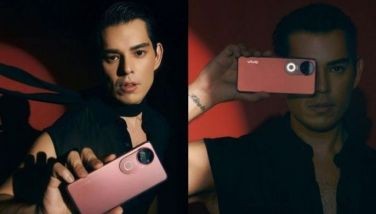Sound and the fury
The good thing about a Marvel movie franchise like Captain America is they won’t have to do much work to turn Chris Evans into a collectible plastic model. He already possesses all the characteristics of a diecast figurine: he’s got the stoic expression and the chiseled physique that seems a bit on the ‘roidy side.
Evans’ moving parts are put to fairly good use in Captain America: The Winter Soldier, this time including not just his shield-flinging skills but a lot of martial arts training, apparently acquired since getting thawed out and teaming up with the Avengers a few years back. Evans has said he finds the superhero genre confining, and that’s understandable. Captain America, a.k.a. Steve Rogers, has never been the most witty or exciting Marvel Comics character in the roster: he doesn’t get the laugh lines; those are mostly reserved for Tony Stark. He lacks a sense of irony, something that, arguably, barely existed back when he was sculpted in a secret military lab during World War II. As the ending of Captain America: The First Avenger left Rogers’ carcass frozen underwater, he’s missed out on about 60 years of pop cultural history. When we catch up with him in The Winter Soldier, ever the Boy Scout, he keeps a little notepad handy for whenever people tell him about new developments in technology and pop music. (He’s shown jotting down Marvin Gaye’s “Trouble Man†soundtrack in his notepad as the film opens, perhaps a nod to his propensity to handle dicey situations.)
Rogers is a good guy, just a little dull and straight at times, so it’s good that this sequel adds some extra spice in the form of S.H.I.E.L.D. cohorts Nick Fury (Samuel L. Jackson) and Natasha Romanov (Scarlett Johansson). The film kicks into high gear within minutes as Rogers, Romanov and his crew seek to release a boatload of S.H.I.E.L.D. employees held hostage by pirates. Romanov utilizes her formidable kicking and thigh-crushing skills, dressed in appropriately snug rubber gear; Rogers sprints around, beaning people in the head with his super-soldier shield and collecting names. They recover a data stick that’s encrypted, and it turns out not even one-eyed Nick Fury can break through the security firewall.
It turns out Fury is working with former S.H.I.E.L.D. leader Alexander Pierce (Robert Redford) to convince the US Senate to pass funding for a new project, HYDRA, that would stop imminent terrorist threats by launching a trio of massive helicarriers to hover over hot spots and take out targets. Any similarity to ongoing US drone technology is strictly intentional.
Another fly in the ointment is a super-strong assassin known as the Winter Soldier. He gets the jump on Fury after a traffic ambush that leads to one of the better action sequences in the movie. For once, Fury lives up to his name, taking it to the streets in a retro-fitted armored SUV as a squadron of baddies threaten to turn him into a grease spot. But it’s the masked, bionic-armed Winter Soldier who nearly does him in.
Everyone in S.H.I.E.L.D. gets a chance to flex some superhero muscle in Winter Soldier, whether it’s Romanov using her curvaceous charms to disarm mercenary sailors or Rogers showing off his newly found Parkour talents to scale the interiors of a helicarrier. Rogers, despite his deadpan demeanor, has a great bit inside a glass elevator that, floor by floor, fills up with lethal adversaries. “Before we get started,†Rogers says, surveying the dozen baddies now surrounding him, “Does anyone want to get out?â€
Cue: fist-flying, weapon-dispatching mayhem.
Final count: Captain America standing tall amid a dozen prone bodies.
In truth, the script by Christopher Markus and Stephen McFeely does inject more back story into the Steve Rogers saga — in particular, his complicated past with Bucky Barnes (Sebastian Stan), a WWII buddy who died for his company. Of course, people never really “die†in these things: he was later revived and scientifically altered to become a nasty super soldier and assassin for the “other side.†His physical strength on par with Captain America’s, he’s the biggest threat S.H.I.E.L.D. has to face.
He also, apparently, once had a fling with Romanov, back when she worked the other side of the Iron Curtain. (Romanov — The Black Widow — needs to get her own movie franchise going soon, at the very least so we can keep track of who she’s slept with in the past.)
It’s not exactly shocking to find out that Pierce’s HYDRA plans are not in the best interests of personal freedom and human rights. The anti-drone message gets hammered home, interestingly, in an exchange between Fury and Rogers in which Captain America says spying and preemptive strikes might have been necessary in the past to protect Americans; now, it’s Americans who need protection from spying and preemptive strikes. Fury, his usual blustery self, will have none of it. He’s basically a hawk, though getting hunted down by the S.H.I.E.L.D. force he helped create makes him do a major rethink. By the end, Nick Fury transforms into Jules, the former cold-ass killer from Pulp Fiction, now an enlightened shadow warrior preparing to simply “walk the earth.†(His mock tombstone bears the inscription: “The path of a righteous man,†another nod to Jackson’s character in the Tarantino film.)
Setting this sequel in the present day allows for greater technology and high-speed butt-kicking, but the comic possibilities of Rogers’ cognitive disconnect — someone from the past, trying to catch up with the modern age — is barely exploited. There’s some fun, flirtatious camaraderie between Romanov and Rogers about his dismal dating history (hasn’t been kissed in 50 years, apparently), but mostly the human moments are swamped amid loud, endless fight sequences and explosions which, in the end, may beef up the interest of action movie fans, but bloat the movie from a preferable two-hour length to something like 136 minutes. Talk about steroids.
















